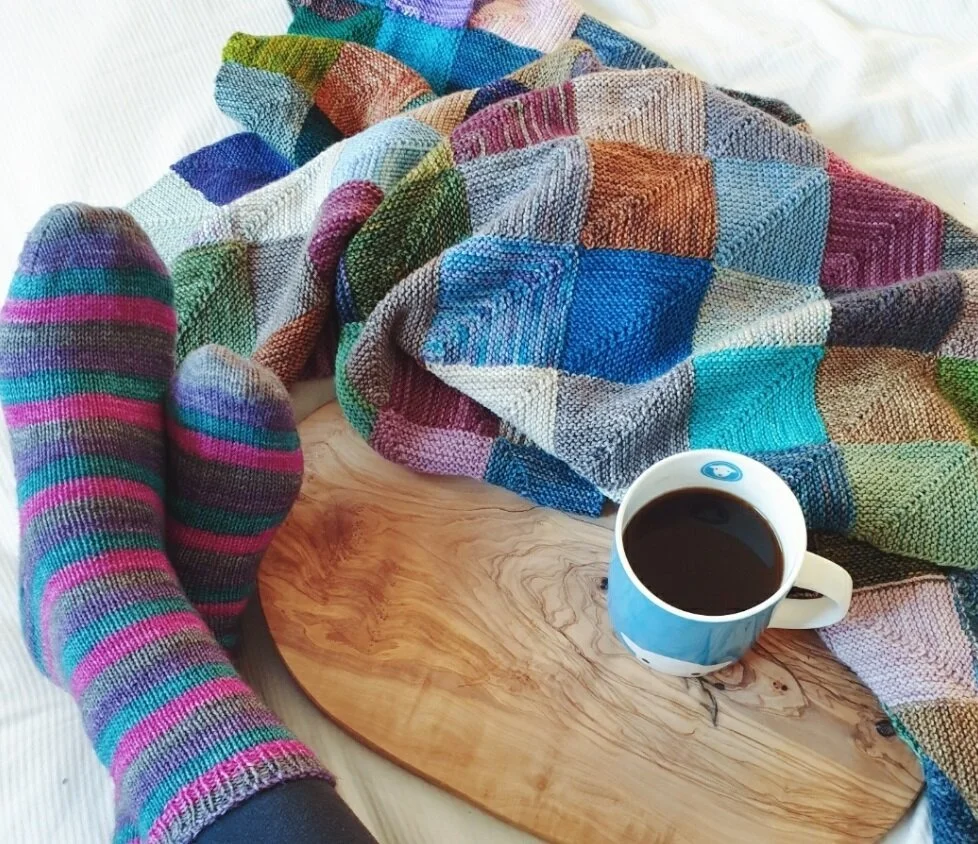If you have knit the Fuss Free Festival Shawl you will have noticed that it has a slipped stitch edging which helps to give it it’s distinctive relaxed crescent shape. Whilst it is isn’t difficult to work a few people contacted me for help as they found it hard to visualise how the stitches should look.
So to help I thought I would just create this mini tutorial just to show how the stitches are slipped.
To start with, all slipped stitches in the pattern are slipped purlwise, by which I mean that you insert the right hand needle tip into the first stitch on the left hand needle as if you were going to purl it.
The instructions say to Sl 1 pwise wyif - ie to slip 1 stitch purlwise with the yarn in front. To do this you start with the yarn hanging down at the front of the work. Leaving the yarn where it is, insert the right hand needle tip purlwise into the first stitch on the left hand needle and slide it across to the right hand needle. You don’t knit it or do a yarn over - the stitch is simply slipped, unworked to the right hand needle.
Then, move the yarn between the two needle tips to the back of the work ready to work the next stitch.
The next stitch is an increase - where you knit into the front of the next stitch, pull the loop through on your right needle tip but don’t slip it off the left hand needle. Instead, insert the RH needle tip into the back of the same stitch. Pull the loop through onto the RH needle tip and then slide both stitches off the LH needle. This creates an increase.
The next stitch is slipped purlwise in the same way as the first. So bring your yarn between the needle tips to the front of the work and then slip the stitch purlwise.
I hope this helps you to visualise the beginning of the shawl. Once you get into your rhythm you will find it to be a relaxing and fun knit - I promise.


